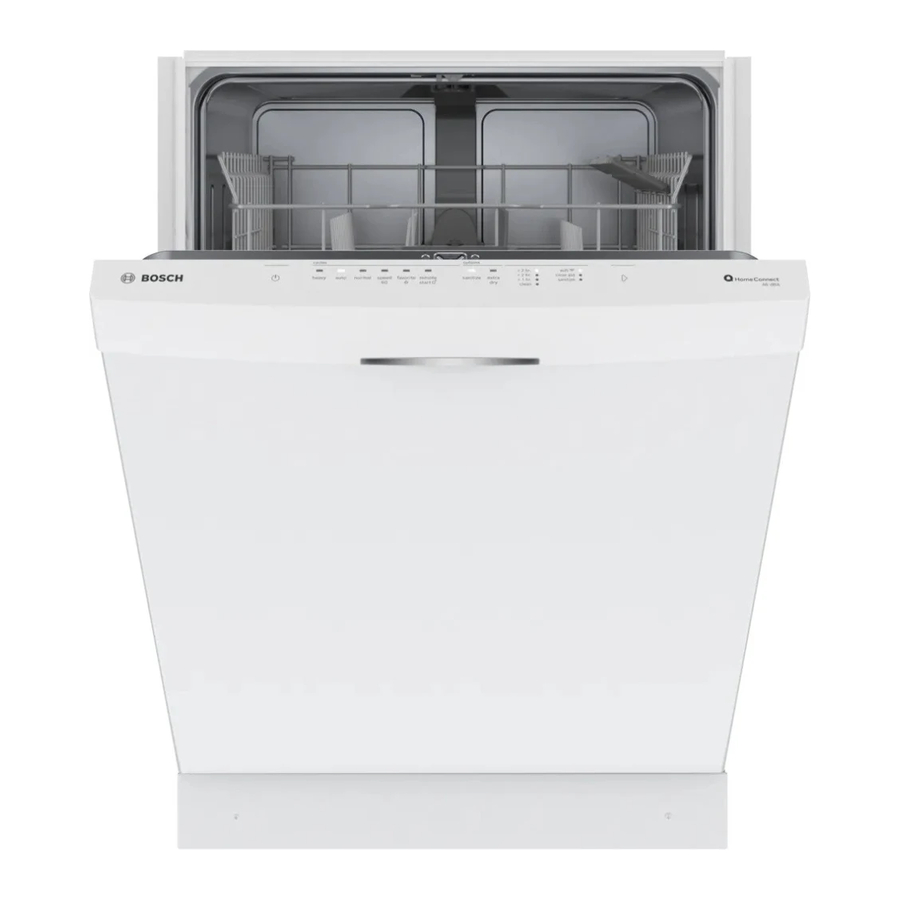
Bosch SHS53CD2N - Dishwasher 24" Manual
- Use and care manual (40 pages) ,
- Quick start and safety manual (13 pages)
- 1 Familiarizing yourself with your appliance
- 2 Unit Cycles
- 3 Options
- 4 Features
- 5 Before using for the first time
- 6 Rinse aid system
- 7 Detergent
- 8 Dishware
- 9 Basic Operation
- 10 Basic settings
- 11 Home Connect
- 12 Cleaning and maintenance
- 13 Troubleshooting
- 14 Transportation, storage and disposal
- 15 Customer Service
- 16 Technical specifications
- 17 IMPORTANT SAFETY INSTRUCTIONS
- 18 Preventing material damage
- 19 Documents / Resources

Familiarizing yourself with your appliance
Appliance
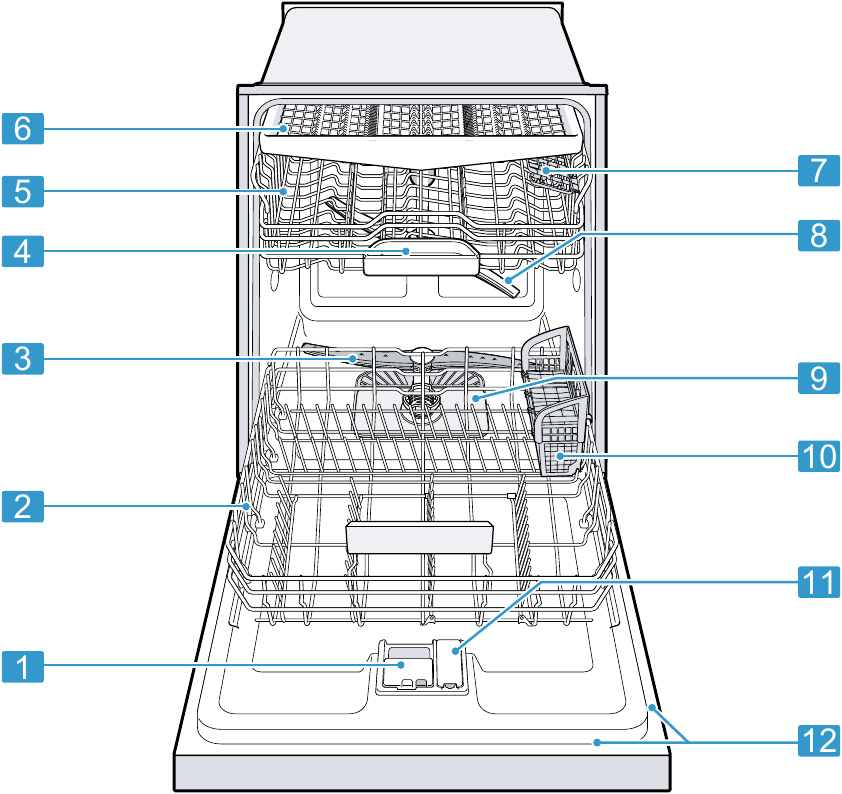
 | Detergent dispenser | Add detergent to the detergent dispenser. |
 | Lower rack | Lower rack |
 | Lower spray arm | The lower spray arm washes the dishware in the lower rack. If the dishware has not been washed properly, clean the spray arms. → "Cleaning the spray arms" |
 | Detergent tab collecting tray | During the wash cycle, detergent tabs automatically drop out of the detergent dispenser into the tab collecting tray, where they can dissolve fully. |
 | Upper rack | Upper rack |
 | Silverware drawer | Silverware drawer |
 | Cup shelf1 | Cup shelf |
 | Upper spray arm | The upper spray arm washes the dishware in the upper rack. If the dishware has not been washed properly, clean the spray arms. → "Cleaning the spray arms" |
 | Filter system | Filter system |
 | Silverware basket | Silverware basket |
 | Dispenser for rinse aid | Rinse aid is added to the dispenser for rinse aid. → "Rinse aid system" |
 | Rating plate | Rating plate with E number and FD number. You will need this data to contact Customer service |
1 Depending on the appliance specifications
Controls
You can use the control panel to configure all functions of your appliance and to obtain information about the operating status.
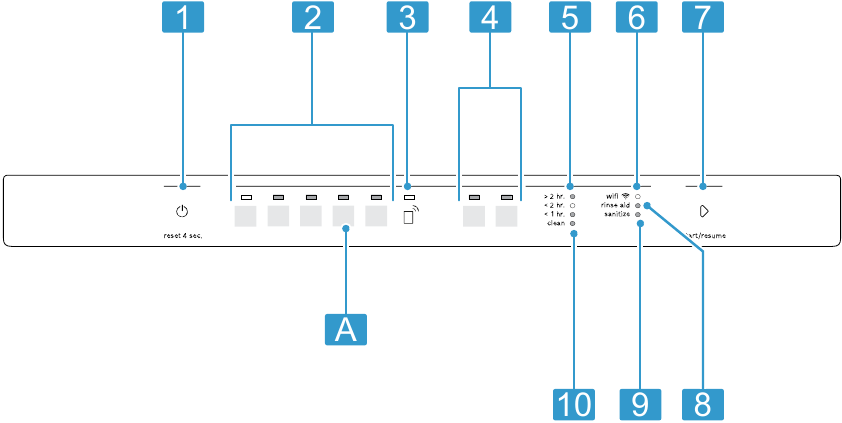
 | Button A | If you press A for approx. 3 seconds, you can open the basic settings. → "Changing the basic settings" |
 | ON/OFF button and reset button Reset 4 sec. | Switching on the appliance Switching off the appliance Terminating the wash cycle |
 | Cycle buttons | "Unit Cycles" |
 | Remote Start  | → "Remote Start  " " |
 | Cycle buttons and options | Cycles Options |
 | Display for remaining time | The displays show the remaining time of the wash cycle. |
 | WLAN display | Home Connect |
 | Start button | Starting the wash cycle |
 | Rinse aid refill indicator | Rinse aid system → "Adding rinse aid" |
 | Display Sanitize | The indicator lights up at the end of the program Sanitize. |
 | Display Clean | Once the wash cycle has ended, the display lights up. |
Unit Cycles
Below is an overview of the different cycles available on your dishwasher.
The running time may vary depending on the cycle selected. The running time depends on the water temperature, the quantity of dishware, the level of dirt and the option selected. The running time will change if the rinse aid system is switched off or rinse aid needs to be added. The consumption values relate to normal conditions and a water hardness of 16 - 20 °E. Different influencing factors such as water temperature or pipe pressure may result in deviations.
| Cycle | Purpose | Cycle sequence | Usage
|
| Heavy | Dishware: Level of soiling: | Intensive |
|
| Auto | Dishware: Level of soiling: | Sensor controlled: |
|
| Normal | Dishware: Level of soiling: | Most economical cycle: |
|
| Speed 60 | Dishware: Level of soiling: | Time-optimized: |
|
| Favorite | - | - |
|
Energy Guide
The Energy Guide label was based on the Normal soil sensing cycle.
The unit was tested without any rinse aid (liquid) in the rinse aid dispenser. A single dose of detergent was inserted into the detergent dispenser, with no detergent being used in the prewash. The unit was not subjected to truncated testing per the definitions in the test procedure. We recommend that dish loads such as the one in the energy certification test have the rack position set in the highest position. Recommended for daily, regular or typical use to completely wash a full load of normally soiled dishes.
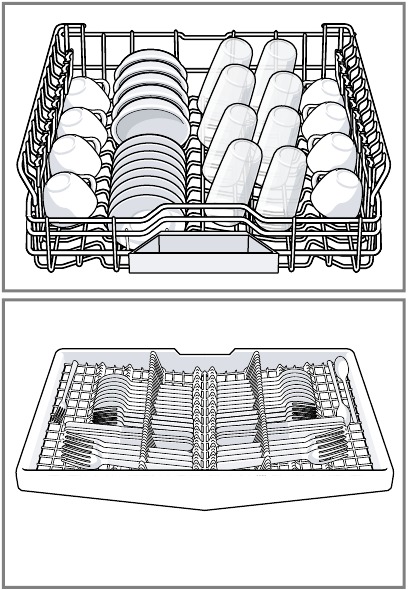
Favorite
With this function, you can save a combination of a Cycle and an Option.
You can save the selected Cycle and Option combination via the Home Connect app or on the appliance.
Tip: You can use the Home Connect app to download additional Cycles and Options and save them.1
1 Depending on the appliance specifications
Options
Here is an overview of the different options available on your dishwasher.
| Option | Use |
| Extra Dry |
|
| sanitize | |
Concerning dishware sanitation, be aware of the following.
Features
You can find an overview of the possible features of your appliance and how to use them here. These features depend on your appliance model.
Upper rack
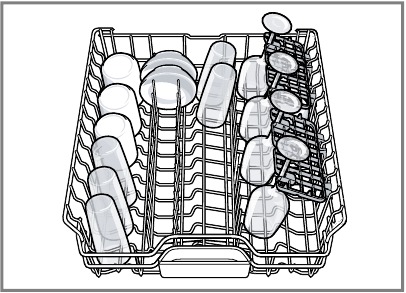
Arrange cups, glasses, and small tableware items in the top rack.
You can adjust the height of the upper rack to make room for larger items.
Adjusting upper rack with RackMatic
To wash large items in the racks, adjust the shelf height of the upper rack.
- Pull out the upper rack.
- To prevent the rack from suddenly dropping down, hold the side of the rack by the top edge.
- Press in the right and left hand levers on the outside of the rack.
![Bosch - SHS53CD2N - Adjusting upper rack with RackMatic - Step 1 Adjusting upper rack with RackMatic - Step 1]()
- Raise or lower the rack evenly to the right level. Check that the rack is level on both sides.
![Bosch - SHS53CD2N - Adjusting upper rack with RackMatic - Step 1 Adjusting upper rack with RackMatic - Step 1]()
- Release the levers.
- The rack clicks into position.
- Slide the rack in.
Lower rack
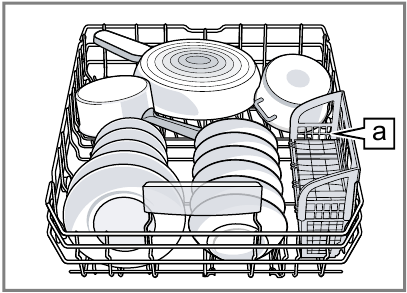
Arrange pans and plates in the lower rack.
- Silverware basket1
1 Depending on the appliance specifications
Silverware Basket
Arrange the silverware in the silverware basket, ensuring that the items are not nestled together and with the sharp points down.
The sharp points and edges of knives and other sharp utensils can cause serious injury.
- Load knives and other sharp utensils with edges down. Do not allow children to handle or play near knives and sharp utensils
![Bosch - SHS53CD2N - Arranging the silverware in the silverware basket Arranging the silverware in the silverware basket]()
Silverware drawer
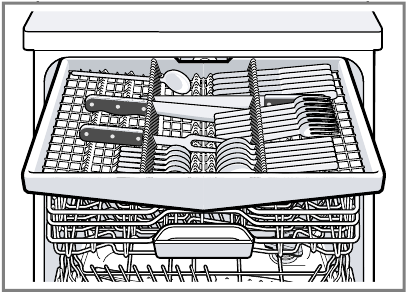
Arrange silverware in the silverware drawer.
Arrange silverware with the points and sharp edges down.
Cup shelf
Use the cup shelf and the space underneath for small cups and glasses or for large items of silverware, e.g. cooking spoons or serving cutlery.
If you do not need the cup shelf, you can fold it up.
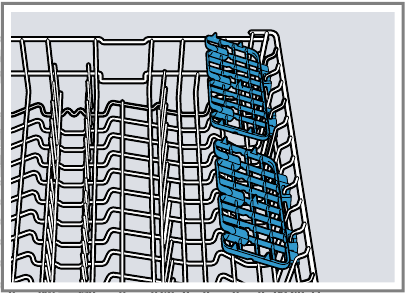
Flip tines
Use the flip tines to position dishware securely, e.g. plates. You can fold the tines down to arrange pans, bowls and glasses better.1
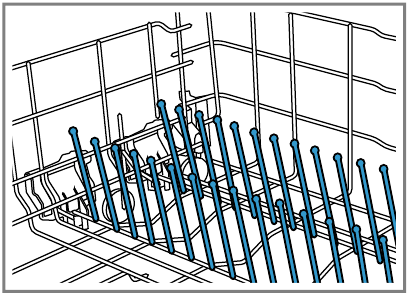
Folding down the tines1
If you do not need the tines, fold them down.
- Push the lever forward
![]() and fold down the tines
and fold down the tines ![]() .
.
![Bosch - SHS53CD2N - Folding down the tines Folding down the tines]()
1 Depending on the appliance specifications
Rack heights
Set the racks at the right height.
| Appliance height 34" with silverware drawer | ||
| Setting | Upper rack | Lower rack |
| 1 max. ø | 18 cm / 7" | 33 cm / 13" |
| 2 max. ø | 20.5 cm / 8" | 30.5 cm / 12" |
| 3 max. ø | 23 cm / 9" | 28 cm / 11" |
Tip: If you remove the 3rd rack, you can place large items of dishware in the lower rack.
Before using for the first time
Initial use
Before the first use, or after a factory reset, you will need to configure the settings.
Tip: Connect your appliance to a mobile device. You can conveniently change all settings using the Home Connect app.
→ "Home Connect quick start"
Requirement: The appliance has been installed and connected.
- Add rinse aid.
- Switch on the appliance.
- Add detergent.
- Start the Program with the highest cleaning temperature without dishware.
To remove any marks from water or other residues, we recommend you operate the appliance without dishware before using it for the first time.
Tip: You can change these settings and other Basic settings at any time.
Rinse aid system
Rinse aid
For optimum drying results, use rinse aid.
Only use rinse aid intended for household dishwashers.
Adding rinse aid
If the rinse aid refill indicator lights up, fill the dispenser with rinse aid. Only use rinse aid intended for household dishwashers.
- Press the catch on the lid of the dispenser for rinse aid
![]() and lift
and lift ![]() .
.
![Bosch - SHS53CD2N - Adding rinse aid - Step 1 Adding rinse aid - Step 1]()
- Add rinse aid up to the max mark.
![Bosch - SHS53CD2N - Adding rinse aid - Step 2 Adding rinse aid - Step 2]()
- If rinse aid spills out, remove it from the tub.
Spilled rinse aid can cause excessive frothing during the wash cycle. - Close the lid of the dispenser for rinse aid.
Setting the amount of rinse aid
If there are streaks or water spots on dishware, change the amount of rinse aid.
- Press ON/OFF.
- To open the appliance settings, press the A button for 3 seconds.
![Bosch - SHS53CD2N - Setting the amount of rinse aid - Step 1 Setting the amount of rinse aid - Step 1]()
- Press Start repeatedly until the right amount of rinse aid has been set.
![Bosch - SHS53CD2N - Setting the amount of rinse aid - Step 2 Setting the amount of rinse aid - Step 2]()
0, 1, 2 or 3 LEDs will light up accordinghly.
The factory setting is level 2.- A low setting adds less rinse aid during the wash cycle and reduces streaking on dishware.
- A higher setting adds more rinse aid during the wash cycle, reduces water spots and improves the drying result.
- To store the settings, press the A button for 3 seconds.
Switching off the amount of rinse aid to be dispensed
- To open the appliance settings, press A button for 3 seconds.
![Bosch - SHS53CD2N - Switching off amount of rinse aid to be dispensed Switching off amount of rinse aid to be dispensed]()
- Press Start repeatedly until no LED lights up.
- To store the setting, press A button for 3 seconds.
Detergent
Find out which detergents are suitable for your appliance.
The correct detergents
Only use detergents that are made for dishwashers, either basic or combination detergents.
For the best washing and drying results, use a separate detergent, then add Special salt and Rinse aid separately.
Modern, powerful detergents mainly use a low-alkaline formulation with enzymes. Enzymes break down starch and remove protein. Oxygen-based bleaching agents are generally used to remove colored stains, e.g. tea or ketchup.
Note: Follow the manufacturer's instructions for each detergent.
| Detergent | Description |
| Tabs | Tabs are perfect for all cleaning functions and do not need to be measured out. However, with shorter Cycles sometimes tabs do not dissolve entirely and leave residues of detergent. This may reduce its effectiveness. |
| Powder detergent | Powder detergent is recommended for shorter cycles. The dosage can be adjusted to the level of soiling. |
| Liquid detergent | Liquid detergent works faster and is recommended for shorter cycles without a pre-rinse. The dosage can be adjusted to the level of soiling. |
Incompatible detergents
Do not use a detergent which is not designated for dishwasher use or contains chlorine.
| Detergent | Description |
| Liquid hand soap | Liquid hand soap can cause increased frothing and damage the appliance. |
| Detergent containing chlorine | This may leave chlorine residue on dishware. |
Information on Detergent
Follow the instructions on detergents in everyday use.
Adding Detergent
- To open the detergent dispenser, press the locking latch.
- Add the detergent to the dry detergent dispenser.
If you are using tablets, one is enough. Insert the tablets in a horizontal position.
If you are using powder or liquid detergent, follow the manufacturer's instructions and quantities for dosage in the detergent dispenser.
1.5 to 1.75 Tbsp (20 ml – 25 ml) detergent is sufficient for normal soiling. If dishware is only lightly soiled, slightly less than the amount of detergent specified is usually sufficient.
![Bosch - SHS53CD2N - Adding Detergent - Step 1 Adding Detergent - Step 1]()
- Close the lid of the detergent dispenser.
![Bosch - SHS53CD2N - Adding Detergent - Step 2 Adding Detergent - Step 2]()
Detergent table
Detergent amount guidelines
Note: This dishwasher provides the optimum cleaning performance without the use of a prewash detergent and further enhances our standards of sustainability and efficiency.
| Auto | 1.75 Tbsp (25 ml) or 1 tab |
| Normal | 1.75 Tbsp (25 ml) or 1 tab |
| Heavy | 3 Tbsp (45 ml) or 1 tab |
| Speed 60 | 1 Tbsp (15 ml) |
Dishware
Only wash dishware that is suitable for dishwashers.
Note: Decorated glassware and parts made of aluminum or silver may fade or discolor with dishwashing. Delicate types of glass may turn cloudy after a few wash cycles.
Damage to glass and dishware
Only put glasses and china in the dishwasher if they are labeled dishwasher-safe. Avoid damage to glass and dishware.
| Cause | Recommendation |
| The following types of dishes are not dishwashersafe: | Only put dishes in the dishwasher if they are labeled dishwasher-safe. |
| The chemical composition of the detergent causes damage. | Use a detergent labeled as gentle to dishes. |
| Highly caustic alkaline or highly acidic cleaning solutions, in particular commercial or industrial cleaners, are not safe to use in the dishwasher with aluminum. | If you use highly caustic alkaline or highly acidic cleaning solutions, in particular commercial or industrial cleaners, do not put anything aluminum in the dishwasher. |
| The water temperature of the cycle is too high. | Select a cycle with lower temperatures. After the cycle has ended, take glassware and silverware out of the appliance without delay. |
| The water temperature of the cycle is too high and the water is too soft. | Select a cycle with lower temperatures. Use detergent with glass protection. |
Loading dishware
Arrange dishware correctly to optimize the dishwashing result and prevent damage to both dishware and the appliance. The noise level may also vary depending on the items placed in your dishwasher.
NOTICE:
Avoid dishwasher damage
Tips
- For better washing and drying results, position items with curves or recesses at an angle so water can run off.
![Bosch - SHS53CD2N - Loading dishware - Positioning items with curves Loading dishware - Positioning items with curves]()
- Remove large remnants of food from dishware.
To save resources, do not pre-rinse dishware under running water. - Observe the following when arranging dishware:
- Do not place small parts in the collecting tray and do not block it with dishware so as not to obstruct the lid of the detergent dispenser.
![Bosch - SHS53CD2N - Loading dishware - Cleaning the collecting tray Loading dishware - Cleaning the collecting tray]()
- Do not place small parts in the collecting tray and do not block it with dishware so as not to obstruct the lid of the detergent dispenser.
Removing dishware
Dishes can be very hot immediately after the cycle ends.
- Check the washing tank and accessories for soiling and clean if necessary.
→ "Cleaning and maintenance"
Loading patterns
Recommended loading patterns.
12 place settings:
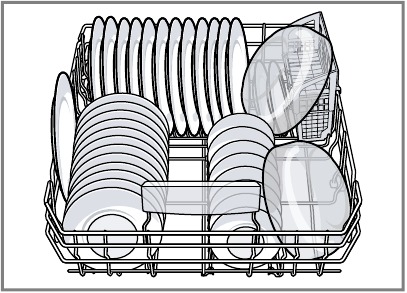
Lower rack
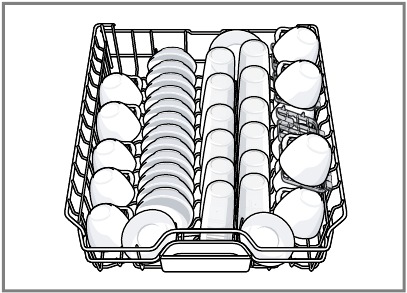
Upper rack

Third rack
Additional loading patterns for 10 place settings:
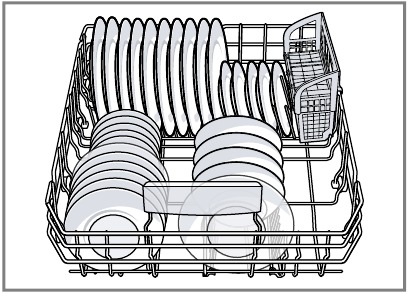
Lower rack
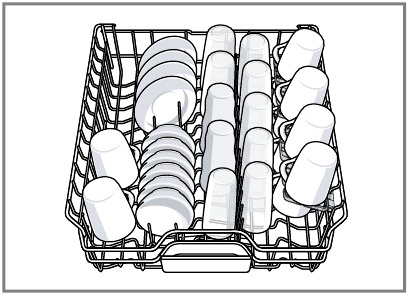
Upper rack

Third rack
Basic Operation
Protection against unintentional operation
Your dishwasher has a built in feature to help prevent unintentional operation, e.g. by children. After starting the appliance, the door has to be closed within 4 seconds, otherwise the operation will be paused. If this occurs, follow the steps below to restart your dishwasher.
- For front button controls: Close the door and press
Notes
- Unintentional operation is activated when:
Switching on the appliance
- Touch ON/OFF with a short 1 second touch.
The cycle last selected and the option last selected will be set by default.
The buttons on the appliance are touch sensitive and only require a quick, gentle touch.
If you do not perform any actions on the appliance for 10 minutes, it will automatically switch off.
Setting a cycle
To adjust the wash cycle to the soiling level of the dishware, select a suitable program.
- Press the right cycle button.
Setting options
You can set options to complete the chosen wash program.
Note: The available options depend on which program is selected.
- Press the button for the relevant option.
Setting the time delay
You can delay the start of the wash cycle via the Home Connect app.
- Open the Home Connect app and select the appliance.
In the settings, you can use the time delay function to delay the start of the wash cycle.
Starting the wash cycle
- Press Start.
Notes
- You can only change a cycle in progress if you can cancel it first.
→ "Terminating the wash cycle"
Interrupting the wash cycle
- Press On/Off.
The program is saved and the appliance switches off. - Press On/Off.
- Press Start to resume the wash cycle.
Terminating the wash cycle
To end a cycle early or to switch from one that has already started, you will need to cancel it first.
- Press Reset 4 sec. for approx. 4 seconds.
Switching off the appliance
To avoid risk of injury, always use caution when opening the door during or following a wash cycle as hot water or steam may escape.
- Please note the information on Preventing Material Damage
- Press On/Off.
Basic settings
You can configure the basic settings for your appliance to meet your needs
Overview of the basic settings
The basic settings depend on the features of your appliance.
| Basic setting | Selection | Description |
| Rinse aid disp. | Scale with 4 levels | Set or switch off the amount of rinse aid to be dispensed. → "Setting the amount of rinse aid" |
| Intensive drying | On Off 1 | Switch intensive drying on or off for each operation. The temperature in the final rinse is increased for a better drying result. This may increase the run time slightly. Note: Please take care with delicate dishware. → "Setting intensive drying" |
| Signal volume | Scale with 4 levels | Adjusting the signal volume. → "Setting the signal volume" |
| Wi-Fi | On 1 Off | Switch the wireless network connection on or off. → "Setting Wi-Fi" The basic setting is not available until you have connected the appliance with the Home Connect app. → "Home Connect" |
| Factory setting | Reset | Restore changed settings to the factory settings. The settings for initial use must be configured. |
1 Factory setting (may vary according to model)
Tip: Connect your appliance to a mobile device. You can conveniently change all settings using the Home Connect app.
→ "Home Connect quick start"
Setting intensive drying
- Press ON/OFF.
- To open the basic settings, press the A button for 3 seconds.
![Bosch - SHS53CD2N - Setting intensive drying - Step 1 Setting intensive drying - Step 1]()
- Press A button repeatedly until the Clean and Sanitize LEDs flash.
- Press Start button repeatedly until the LED (1) lights up.
If the LED is not lit up, intensive drying is switched off.
If the LED is lit up, intensive drying is switched on.
![Bosch - SHS53CD2N - Setting intensive drying - Step 2 - Press start Setting intensive drying - Step 2 - Press start]()
- To store the settings, press A button for 3 seconds.
Setting Wi-Fi
- To open the appliance settings, press A button for 3 seconds.
![Bosch - SHS53CD2N - Setting Wi-Fi - Step 1 Setting Wi-Fi - Step 1]()
- Press A button repeatedly until the Rinse Aid and Sanitize LEDs flash.
- Press Start button repeatedly until the LED (1) lights up.
If the LED is not lit up, Wi-Fi is switched off.
If the LED is lit up, Wi-Fi is switched on.
![Bosch - SHS53CD2N - Setting Wi-Fi - Step 2 - Press Start button Setting Wi-Fi - Step 2 - Press Start button]()
- To store the settings, press A button for 3 seconds.
Setting the signal volume
- To open the appliance settings, press the A button for 3 seconds.
![Bosch - SHS53CD2N - Setting the signal volume - Step 1 Setting the signal volume - Step 1]()
- Press the A button repeatedly until the Clean and Rinse Aid LEDs flash.
- Press the Start button repeatedly until the right signal volume has been set.
0, 1, 2 or 3 LEDs will light up accordingly. The selected signal tone will sound.
The factory setting is level 2.
![Bosch - SHS53CD2N - Setting the signal volume - Step 2 - Press start Setting the signal volume - Step 2 - Press start]()
- To store the setting, press the A button for 3 seconds.
Restoring factory settings
- To open the appliance settings, press the A button for 3 seconds.
![Bosch - SHS53CD2N - Restoring factory settings - Step 1 Restoring factory settings - Step 1]()
- Press the A button repeatedly until the Clean, Rinse Aid and Sanitize LEDs flash.
- Press the Start button.
![Bosch - SHS53CD2N - Restoring factory settings - Step 2 - Press Start Restoring factory settings - Step 2 - Press Start]()
Home Connect
This appliance is network-capable. Connecting your appliance to a mobile device lets you control its functions via the Home Connect app.
The Home Connect services are not available in every country. The availability of the Home Connect function depends on the availability of Home Connect services in your country. You can find information on this at: www.home-connect.com.
To be able to use Home Connect, you must first set up the connection to the WLAN home network (Wi-Fi1) and to the Home Connect app.
The Home Connect app guides you through the entire registration process. Follow the instructions in the Home Connect app to implement the settings.
Tips
Note: Also note the safety information in this instruction manual and ensure that it is also observed when operating the appliance using the Home Connect app.
1 Wi-Fi is a registered trade mark of the Wi-Fi Alliance.
Home Connect quick start
Connect your appliance to a mobile device quickly and easily.
Setting up the Home Connect app
- Install the Home Connect app on your mobile device.
- Start the Home Connect app and set up access for Home Connect.
The Home Connect app guides you through the entire registration process.
Setting up Home Connect
Requirements
- Open the Home Connect app and scan the following QR code.
- Follow the instructions in the Home Connect app.
Home Connect settings
Adapt Home Connect to your needs.
You can find the Home Connect settings in the basic settings for your appliance. Which settings the display shows will depend on whether Home Connect has been set up and whether the appliance is connected to your home network.
Remote Start
You can use the Home Connect app to start the appliance with your mobile device.
Note: You can change settings using the Home Connect app.
Activating Remote Start 
Requirements
- A program is selected.
- Press
![]() .
.
If you open the appliance door, the function is automatically deactivated.![]() button lights up.
button lights up.
Tip: To deactivate the function, press  .
.
Note
The following settings are possible using the Home Connect app:
- Select the function using the
![]() button. This setting is the default preset at the factory.
button. This setting is the default preset at the factory. - Activate the function permanently. With this setting pressing
![]() button is not necessary.
button is not necessary.
Remote Diagnostics
The Customer Service can access your appliance via Remote Diagnostics if you ask them to do so, if your appliance is connected to the Home Connect server and if Remote Diagnostics is available in the country where you are using the appliance.
Tip: Further information and details about the availability of Remote Diagnostics in your country can be found in the Service/Support section of your local website: www.homeconnect.com.
Software update
You can use this function to update the software of your appliance, e.g. for optimization, troubleshooting or safetyrelevant updates.
The Home Connect app informs you about available software updates.
Data Protection
Please see the information on data protection.
The first time your appliance is registered on a home network connected to the Internet, your appliance will transmit the following types of data to the Home Connect server (initial registration):
This initial registration prepares the Home Connect functions for use and is only required when you want to use the Home Connect functions for the first time.
Note: Please note that the Home Connect functions can be utilized only with the Home Connect app. Information on data protection can be called up in the Home Connect app.
Cleaning and maintenance
To keep your appliance working efficiently for a long time, it is important to clean and maintain it carefully.
Cleaning the tub
Using detergents containing chlorine may result in harm to health.
- Remove any heavy soiling in the interior with a damp cloth.
- Add detergent to the detergent dispenser.
- Select the program with the highest temperature.
- Start the program without dishware.
Cleaning agent
Only use suitable cleaning agents to clean your appliance.
→ "Preventing material damage"
Tips on appliance care
Follow the tips on appliance care to make sure your appliance functions properly at all times.
| Action | Benefit |
| Regularly wipe the door seals, the front of the dishwasher and the control panel using a damp cloth and dishwashing liquid. | This ensures the parts of the appliance will remain clean and hygienic. |
| If the appliance is not going to be used for a while, leave the door slightly ajar. | This will prevent unpleasant odors. |
Filter system
The filter system removes coarse soiling from the dishwashing cycle.
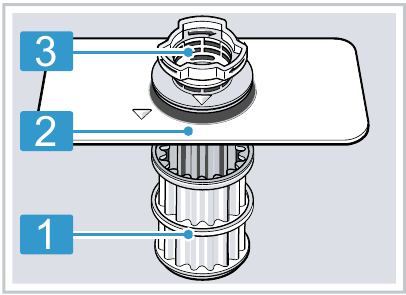
- Micro filter
- Fine filter
- Coarse filter
Cleaning filters
Debris in the dishwashing water may block the filters.
- Check the filters for residue after each wash.
- Turn the coarse filter counterclockwise
![]() and remove the filter system
and remove the filter system ![]() .
. - Ensure that no foreign objects fall into the sump.
![Bosch - SHS53CD2N - Cleaning filters - Step 1 Cleaning filters - Step 1]()
- Ensure that no foreign objects fall into the sump.
- Pull down the micro filter to remove.
![Bosch - SHS53CD2N - Cleaning filters - Step 2 - Remove micro filter Cleaning filters - Step 2 - Remove micro filter]()
- Press the locking catches together
![]() and lift the coarse filter out
and lift the coarse filter out ![]() .
.
![Bosch - SHS53CD2N - Cleaning filters - Step 3 Cleaning filters - Step 3]()
- Clean the filter elements under running water.
Carefully clean the rim of dirt between the coarse and fine filter. - Reassemble the filter system.
Ensure that the locking catches on the coarse filter click into position. - Insert the filter system into the appliance and turn the coarse filter clockwise.
- Ensure that the arrow markings match up.
![Bosch - SHS53CD2N - Cleaning filters - Step 4 Cleaning filters - Step 4]()
- Ensure that the arrow markings match up.
Cleaning spray arms
Limescale and debris in the dishwashing water may block the nozzles and bearings on the spray arms. Clean the spray arms regularly.
- Unscrew the upper spray arm
![]() and pull down to remove
and pull down to remove ![]() .
.
![Bosch - SHS53CD2N - Cleaning spray arms - Step 1 Cleaning spray arms - Step 1]()
- Pull up the lower spray arm to remove.
![Bosch - SHS53CD2N - Cleaning spray arms - Step 2 Cleaning spray arms - Step 2]()
- Insert the lower spray arm.
Clean drain pump
Large food remnants or foreign objects can block the drain pump. As soon as the dishwashing water no longer drains properly, the drain pump must be cleaned
There may be some sharp debris, such as glass fragments, blocking the drain pump.
- Pry the pump cover off using a spoon and grip it by the crosspiece.
![Bosch - SHS53CD2N - Cleaning the drain pump - Step 1 Cleaning the drain pump - Step 1]()
- Lift the pump cover diagonally inward and take it out.
- Insert the pump cover
![]() and press down
and press down ![]() .
.
![Bosch - SHS53CD2N - Cleaning the drain pump - Step 2 Cleaning the drain pump - Step 2]()
Troubleshooting
You can eliminate minor issues on your appliance yourself. Please read the information on eliminating issues before contacting Customer Service. This may avoid unnecessary repair costs.
| Issue | Cause and troubleshooting |
| Four vertical LED's (i.e. the cycle duration indicators and the clean indicator) all light up at the same time. | Not an appliance error. Garbage disposal is still plugged or the drain hose is kinked. |
| Not an appliance error. The drain pump cover is loose or a foreign object is blocking the pump. | |
Filters in the water connection of the supply or AquaStop hose are blocked.
| |
| Inlet hose is kinked. | |
| Water faucet is turned off. | |
| Four vertical LED's (i.e. the cycle duration indicators and the clean indicator) are all flashing. | There is a technical issue.
|
| Dishware is not dry. | No rinse aid used or dosage set too low.
|
Cycle or cycle option has no drying phase, or drying phase is too short.
| |
Water collects in recesses of dishware or silverware.
| |
| The combined detergent used has a poor drying performance. | |
| Extra Dry/intensive drying not activated to improve drying performance. | |
| Dishware removed too early or drying process not yet ended. | |
Rinse aid used has a limited drying performance.
| |
| Silverware is not dry. | Silverware not arranged properly in the silverware basket or silverware drawer. Droplets can form on the contact points of silverware. |
| Appliance interior still wet after wash cycle. | Not an error. Condensation drying creates water droplets in the tub. This is normal. Moisture in the air condenses on the inside walls of the appliance, runs off, and is pumped out. No action required. |
| Food remnants on dishware. | Dishware was placed too close together or rack is overfilled. |
| Spray arm rotation of the lower spray arm is blocked. | |
| Spray arm nozzles are blocked. | |
Filters are dirty.
| |
Filters are inserted incorrectly and/or not engaged.
| |
| Selected wash cycle is too light. | |
| Dishware has been precleaned too intensively. Then the sensors choose a lighter cycle. Stubborn remnants cannot be entirely removed. | |
| Tall narrow containers in corner areas are not rinsed out adequately. | |
Upper rack on right and left not set to same height.
| |
| Detergent residue in the appliance | Lid of the detergent dispenser is blocked by items of dishware and will not open.
|
| The lid of the detergent dispenser is blocked by the tab and will not open. | |
| Tabs are used in the quick or short cycle. There is not enough time for the tab to dissolve. | |
| Detergent may lose its cleaning or dissolving ability after being stored a long time, or the detergent is clumped together. | |
| Water spots on plastic parts. | Droplet formation on plastic surfaces is unavoidable due to the laws of physics. Water spots are visible after drying.
|
| Wipeable or water-soluble coatings inside the appliance or on the door. | There is detergent residue. These coatings cannot generally be removed with chemicals. |
| There are stubborn white coatings on the dishware, inside the appliance or on the door. | There is detergent residue. These coatings cannot generally be removed with chemicals. |
| Too little detergent is being used. | |
| Selected wash cycle is too light. | |
| Tea residue or lipstick marks on dishware. | Dishwashing temperature is too low. |
| Too little detergent is being used or is unsuitable. | |
| Dishware has been precleaned too intensively. Then the sensors choose a lighter cycle. Stubborn remnants cannot be entirely removed. | |
| There are colored coatings (blue, yellow, brown) inside the appliance or on stainless steel dishware that are difficult or impossible to remove. | The formation of films is due to substances contained in vegetables (cabbage, celery, potatoes, noodles, etc.) or tap water (manganese).
|
The formation of films is due to metal components on silver or aluminum dishware.
| |
| Plastic parts inside the appliance are discolored. | Plastic parts inside the appliance may become discolored over the life of the dishwasher. |
| Plastic parts are discolored. | Dishwashing temperature is too low. |
| Dishware has been precleaned too intensively. Then the sensors choose a lighter cycle. Stubborn remnants cannot be entirely removed. | |
| There are removable streaks on glasses, glassware with a metallic appearance and silverware. | Amount of rinse aid to be dispensed is set too high.
|
No rinse aid has been added.
| |
There is detergent residue in the final rinse. Lid of detergent dispenser is blocked by dishware and will not open fully.
| |
| Dishware has been precleaned too intensively. Then the sensors choose a lighter cycle. Stubborn remnants cannot be entirely removed. | |
| Irreversible clouding of glassware. | Glasses are not dishwasher-proof, only suitable for dishwashers. |
| Detergent residue is present in the detergent dispenser or the tab collecting tray. | Spray arms were blocked by dishware so detergent was not rinsed out. |
| Detergent dispenser was damp when detergent was added. | |
| Excessive formation of foam occurs. | Hand soap got in the rinse aid dispenser.
|
| Rinse aid has been spilled. | |
| Detergent or machine care product used causes excessive foaming. | |
| Connection to home network is not established. | WLAN on router is not active. |
| WLAN display is flashing. | Connection to home network is not available. |
| Home Connect cannot be implemented correctly. | Home Connect set incorrectly. |
| There is a technical error. | |
| Refill indicator for rinse aid lights up. | No rinse aid.
|
| Refill indicator for rinse aid does not light up. | Rinse aid system is switched off.
|
| All LEDs light up or flash. | Electronics have detected a fault.
|
| Water is left in the appliance at the end of the program. | Filter system or area under the filters is blocked. |
Program has not yet ended.
| |
| Appliance cannot be switched on or operated. | Software update is taking place. |
| Appliance functions have failed. | |
| Appliance does not start. | The breaker has tripped. |
| Power cord is not inserted. | |
| Appliance door is not closed properly. | |
| Wash cycle starts up automatically. | You did not wait until the cycle ended. |
| Appliance stops during the cycle or cuts out. | Appliance door is not closed properly. |
| Power and/or water supply has been interrupted. | |
| Upper rack is pressing against inner door and preventing appliance door from being closed securely. | |
| Appliance door cannot be closed. | Door lock has been activated. |
Door cannot be closed due to installation method.
| |
| Lid on the detergent dispenser cannot be closed. | Detergent dispenser or lid are blocked by sticky detergent residue. |
| Filling valves making knocking noises. | Caused by the domestic installation. No fault present in the appliance. Does not affect functioning of the appliance. |
| Noise level varies | The noise level can vary, depending on what kind of dishes are loaded and where they are placed.
|
| Spray arm is striking dishes. | |
| With a small load the water jets directly strike against the tub. | |
| Light items of dishware move about during the wash cycle. |
1 Depending on the appliance specifications
Transportation, storage and disposal
Removing the appliance
- Disconnect the appliance from the power supply.
- Turn off the water faucet.
- Detach the drain connection.
- Detach the water connection.
- Loosen any screws fastening the appliance to cabinet parts.
- Remove the base panel if fitted.
- Pull the appliance out carefully, along with the hose behind it.
Vacation and Storage
NOTICE:
Preparing your unit for vacation
Winterizing your unit
Transporting the appliance
To avoid damage to the appliance, empty it before transporting.
Note: Always transport the dishwasher upright to prevent residual water getting into the machine's controls and damaging the appliance.
- Remove dishware from the appliance.
- Secure loose parts.
- Turn the water faucet on.
- Switch on the appliance.
- Select the cycle with the highest temperature.
- Start the cycle.
- To drain the appliance, terminate the cycle after approx. 4 minutes.
→ "Terminating the wash cycle" - Switch off the appliance.
- Turn off the water faucet.
- To empty the residual water out of the appliance, detach the supply hose and let the water drain out.
Customer Service
With any warranty repair, we will make sure your appliance is repaired by an authorized service provider using genuine replacement parts. We use only genuine replacement parts for all repairs.
Detailed information on the warranty period and terms of warranty can be found in the Statement of Limited Product Warranty, from your retailer, or on our website.
If you contact Customer Service, you will need the model number (E-Nr.), the production number (FD) and the consecutive numbering (Z-Nr.) of your appliance.
USA:
1-800-944-2904
www.bosch-home.com/us/owner-support/get-support
www.bosch-home.com/us/shop
CA:
1-800-944-2904
www.bosch-home.ca/en/service/get-support
www.bosch-home.ca/en/service/cleaners-and-accessories
For assistance with connecting to Home Connect, you can also view instructions here:
www.home-connect.com/us/en/help-support/set-up
Model number (E-Nr.), production number (FD) and consecutive numbering (Z-Nr.)
You can find the model number (E-Nr.), the production number (FD) and the consecutive numbering (Z-Nr.) on the appliance's rating plate.
The rating plate is located inside the appliance door.
Making a note of your appliance's details and the Customer Service telephone number will enable you to find them again quickly.
Technical specifications
| Weight | Max.: 60 kg/132 lbs |
| Voltage | 120 V, 60 Hz |
| Power rating | 1440 W |
| Fuse | 12 A |
| Water pressure | |
| Inlet rate | Min. 2.6 gal/min |
| Water temperature | Cold water. Hot water max.: 140°F/ (60°C) |
| Load capacity | 16 place settings |
Information regarding Free and Open Source Software
You can request the relevant information from [email protected] or BSH Hausgeräte GmbH, CarlWery-Str. 34, 81739 Munich, Germany.
The source code will be made available to you on request.
Register your appliance and join the Bosch family of perks:
bosch-home.com/us/mybosch
IMPORTANT SAFETY INSTRUCTIONS
READ AND SAVE THESE INSTRUCTIONS
Read all instructions carefully before use. These precautions will reduce the risk of electrical shock, fire and injury to persons. When using kitchen appliances, basic safety precautions must be followed including those in the following pages.
Safety definitions
Here you can find explanations of the safety signal words used in this manual.
This indicates that death or serious injuries may occur as a result of non-observance of this warning.
This indicates that minor or moderate injuries may occur as a result of non-observance of this warning.
NOTICE:
This indicates that damage to the appliance or property may occur as a result of non-compliance with this advisory.
Note: This alerts you to important information and/or tips.
General information
To reduce the risk of fire, electrical shock, or serious injury, observe the following.
Intended use
Only use this appliance:
Restrictive Use
This appliance is not intended for use by persons (including children) with reduced physical, sensory or mental capabilities, or lack of experience and knowledge, unless they have been given supervision or instruction concerning use of the appliance by a person responsible for their safety.
Grounding instructions
This appliance must be grounded to a metal, permanent wiring system or an equipment grounding conductor must be run with the circuit conductors and connected to the equipment grounding terminal or lead on the dishwasher. See the Installation Instructions included with this dishwasher for more information on electrical requirements.
Improper connection of the equipment grounding conductor can result in risk of electric shock.
This appliance must be grounded. In the event of a malfunction or breakdown, grounding will reduce the risk of electric shock by providing a path of least resistance for electric current. This appliance is equipped with a cord having an equipment-grounding conductor. Check with a qualified electrician or authorized service representative if you are in doubt whether the appliance is properly grounded.
Safe use
Follow these safety instructions when using the appliance.
To reduce the risk of serious injury, observe the following.
Under certain conditions, hydrogen gas may be produced in a hot water system that has not been used for two weeks or more. Hydrogen gas is explosive.
To avoid risk of electric shock, observe the following.
The blow opening of the Zeolith container becomes hot and can cause burns.
To avoid risk of injury, when loading items to be washed, observe the following.
For safe care and operation of your appliance, observe the following.
NOTICE:
Water and power shut off
Risk to children
Follow these safety instructions if there are children in your home.
To reduce risk of injury to children, observe the following.
State of California Proposition 65 Warnings
This product may contain a chemical known to the State of California, which can cause cancer or reproductive harm. Therefore, the packaging of your product may bear the following label as required by California:
STATE OF CALIFORNIA PROPOSITION 65 WARNING:
Cancer and Reproductive Harm - www.P65Warnings.ca.gov
Preventing material damage
NOTICE:
Harsh chemicals such as bleach-based products can damage your dishwasher.
Certain cleaning products may damage the appliance.
Avoid stainless steel polish
Escaping water vapor can damage cabinetry.
Protect your appliance from the elements.
Special salt for dishwashers can damage the tub due to corrosion.
Detergent may damage the water softening system.

Documents / Resources
References
http://www.p65warnings.ca.gov
![www.home-connect.com]() Connect your household | Home Connect
Connect your household | Home ConnectAUDIOVISIONS
![www.bosch-home.com]() Customer Service I Bosch
Customer Service I Bosch![www.bosch-home.com]() Bosch Home Appliances | Bosch Cleaners, Filters, Accessories & Parts Store
Bosch Home Appliances | Bosch Cleaners, Filters, Accessories & Parts Store![www.bosch-home.ca]() Service - Get Support | Bosch Home Appliances
Service - Get Support | Bosch Home Appliances![www.bosch-home.ca]() Cleaners & Accessories | Bosch Home Appliances
Cleaners & Accessories | Bosch Home Appliances![www.home-connect.com]() Help & Support | Home Connect
Help & Support | Home Connect![bosch-home.com]() MyBosch - Personal product registration for Bosch Home Appliances
MyBosch - Personal product registration for Bosch Home Appliances
Download manual
Here you can download full pdf version of manual, it may contain additional safety instructions, warranty information, FCC rules, etc.
Thank you! Your question has been received!

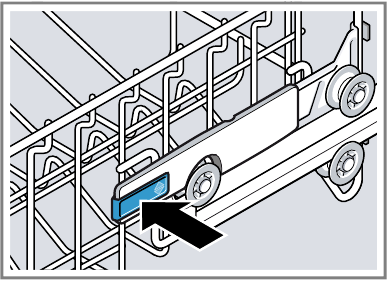
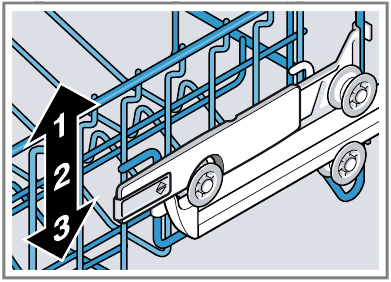
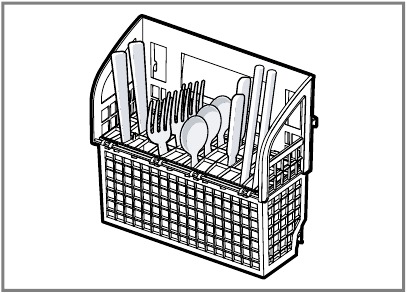
 and fold down the tines
and fold down the tines  .
.
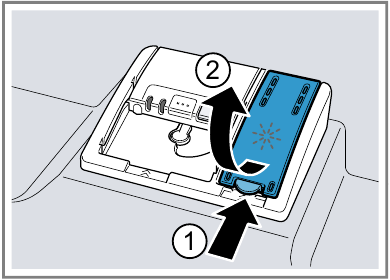




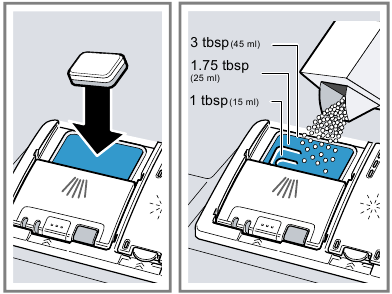














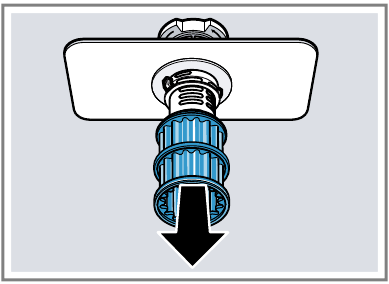
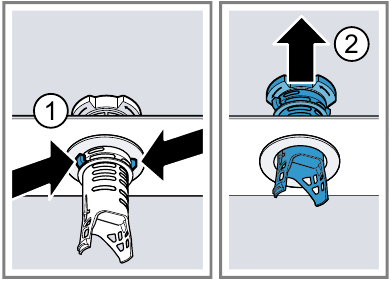
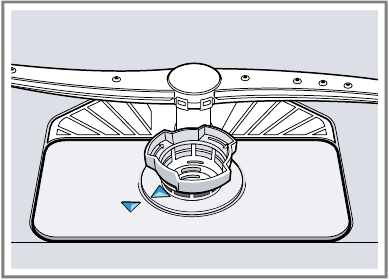
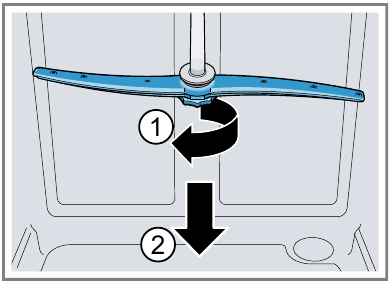
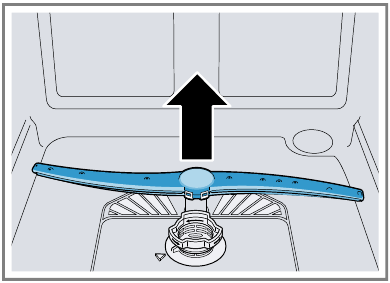



























Need Assistance?
Do you have a question about the SHS53CD2N that isn't answered in the manual? Leave your question here.